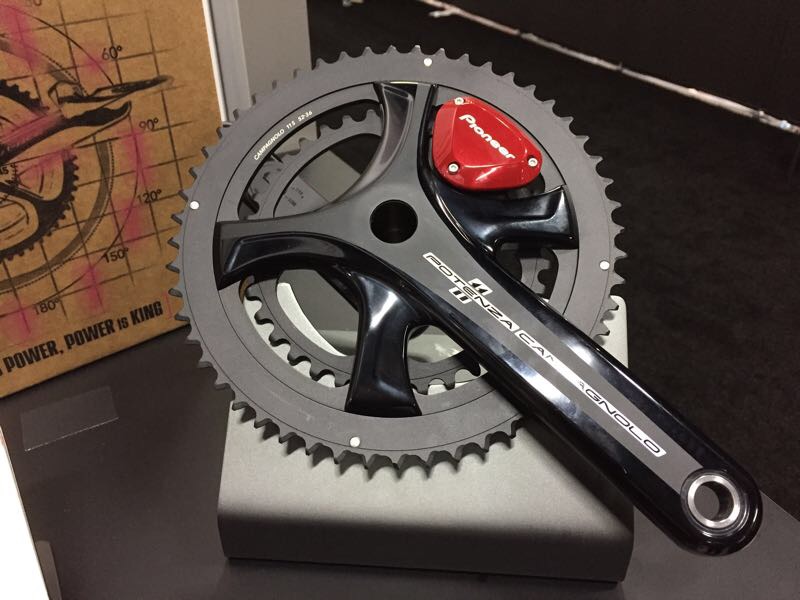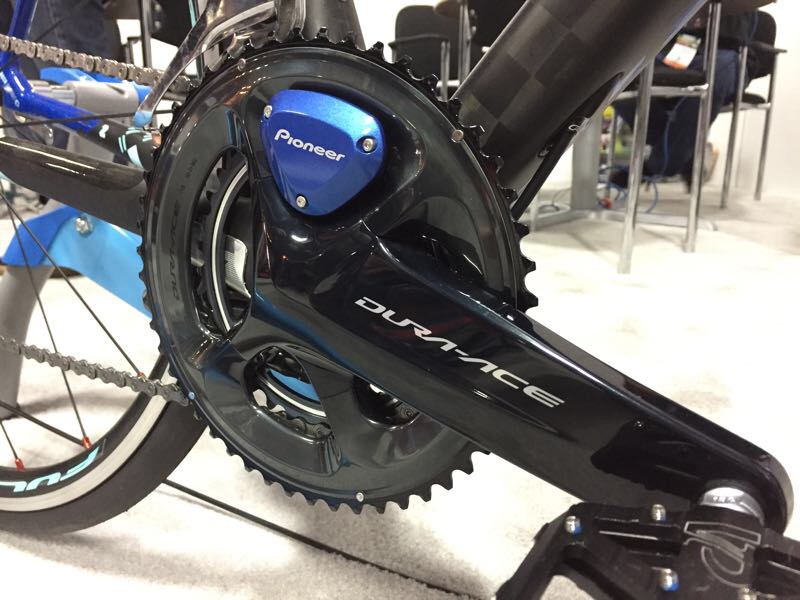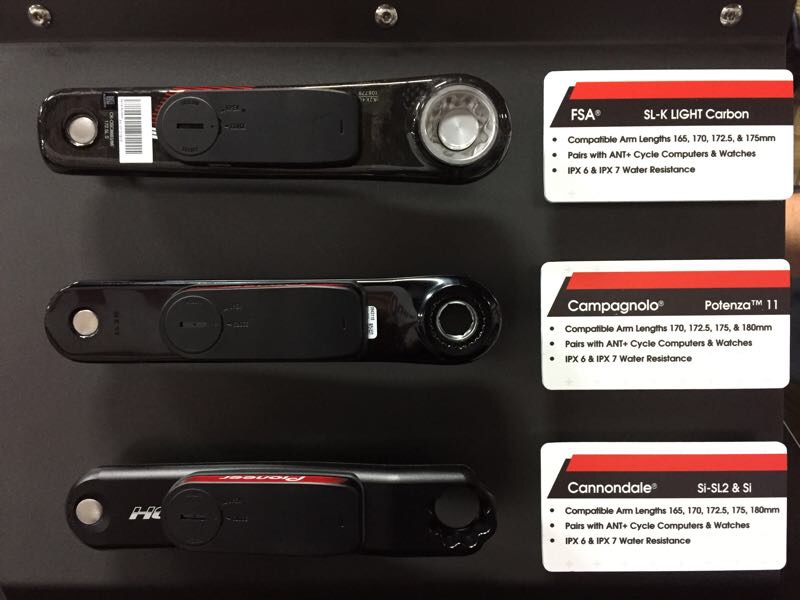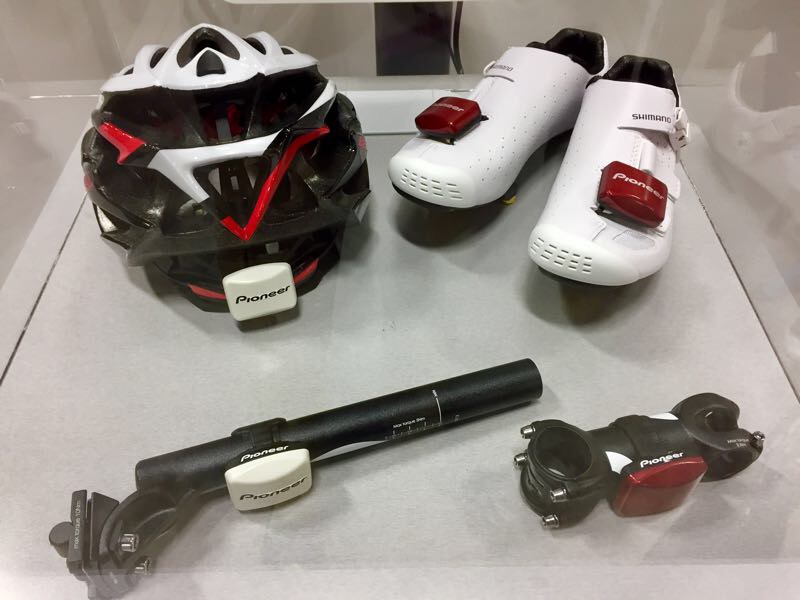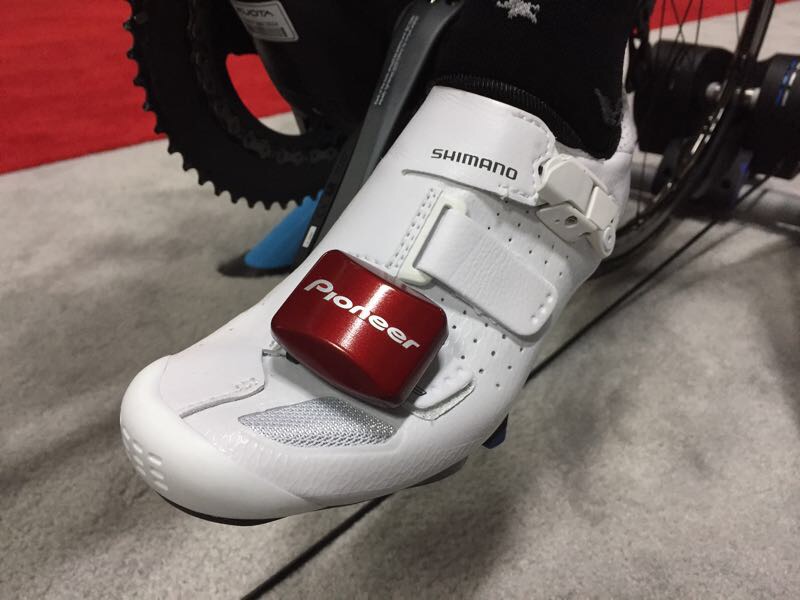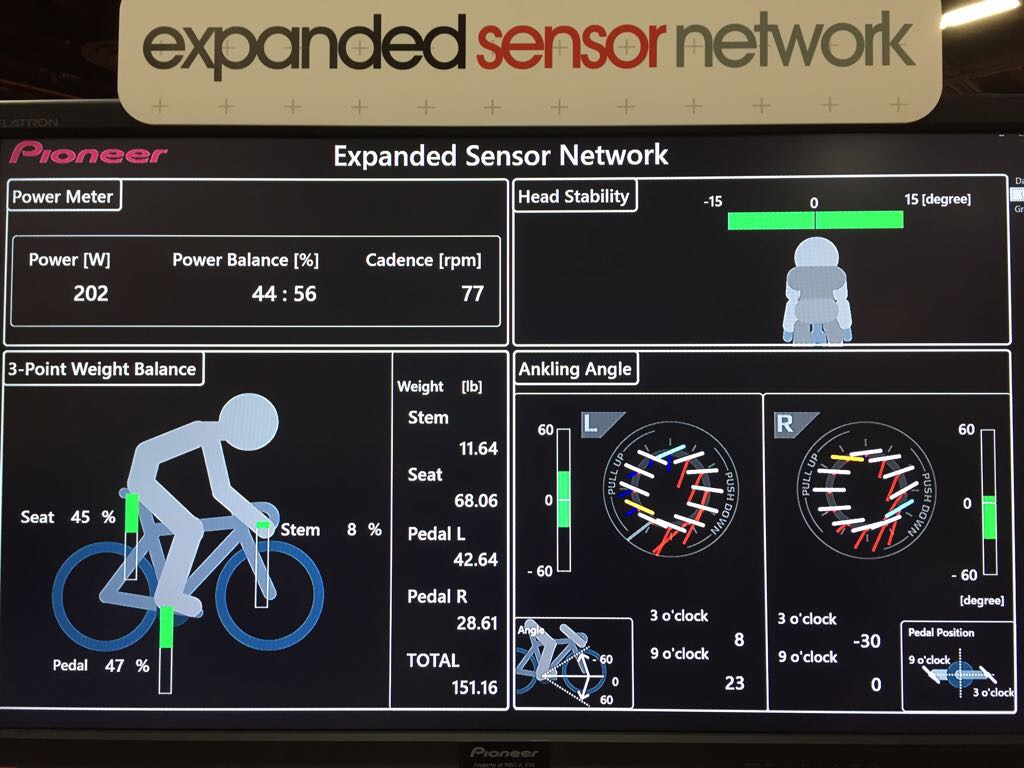Pioneer will have the first aftermarket power meter for the new Shimano R9100 crankset. It’s coming in November in dual leg or single sided options, offered both as the complete package with new cranks or as the aftermarket add-on kit. Pricing is $1,499 for the complete crankset with dual power, or $629 for just the left arm with a sensor preinstalled. The add-on kits are $999 and $499.
Perhaps more impressive than the speed with which they’ve prepped the unit for Shimano’s latest is the number of new options for other cranks…
Pioneer power is now available on Campagnolo Potenza as single or dual leg, sold as an add-on kit to start.
They’ve also added options for FSA SL-K carbon and Cannondale SiSL2 and Si alloy cranks. The challenge with putting it on carbon cranks is that they “bend” differently than alloy ones, which means the deflection can’t easily be measured in the same spots. They say the FSA cranks are closest to alloy because they bend in the same general area, letting Pioneer capture force direction and normal power readings in both ANT+ and their higher resolution “Pioneer Mode.”
All three are sold as a single leg (left side) add-on kit for your existing cranks for $499, same as the others, which includes installation and all parts except the crankset. The dual sided Campy option is $999.
They’re also breaking into mountain bikes with single leg options for XT M8000 and XTR M9020 (Trail version only, the Race cranks don’t have a wide enough Q-factor to guarantee frame clearance).
Firmly in the development stage is an expanded sensor collection that gives them more things to measure. A tota of 28 sensors in five locations on the bike provide three new metrics, including include head stability, weight distribution and ankle/shoe angle.
The seatpost and stem use bonded-on strain gauges, installed by Pioneer using a similar kit system as the cranks. The others use gyros and accelerometers. These are here to show they’re serious about the cycling business and get feedback to see if and how the industry wants this info. It’s part of a three year development plan, so you won’t be able to buy it anytime soon, but could be very useful to bike fitters and teams. Overlay the ankle angle with power data and uou could determine if you’re losing watts by keeping your feet too flat, or change the saddle or handle bar position to better balance your position. The data points are certainly interesting.
